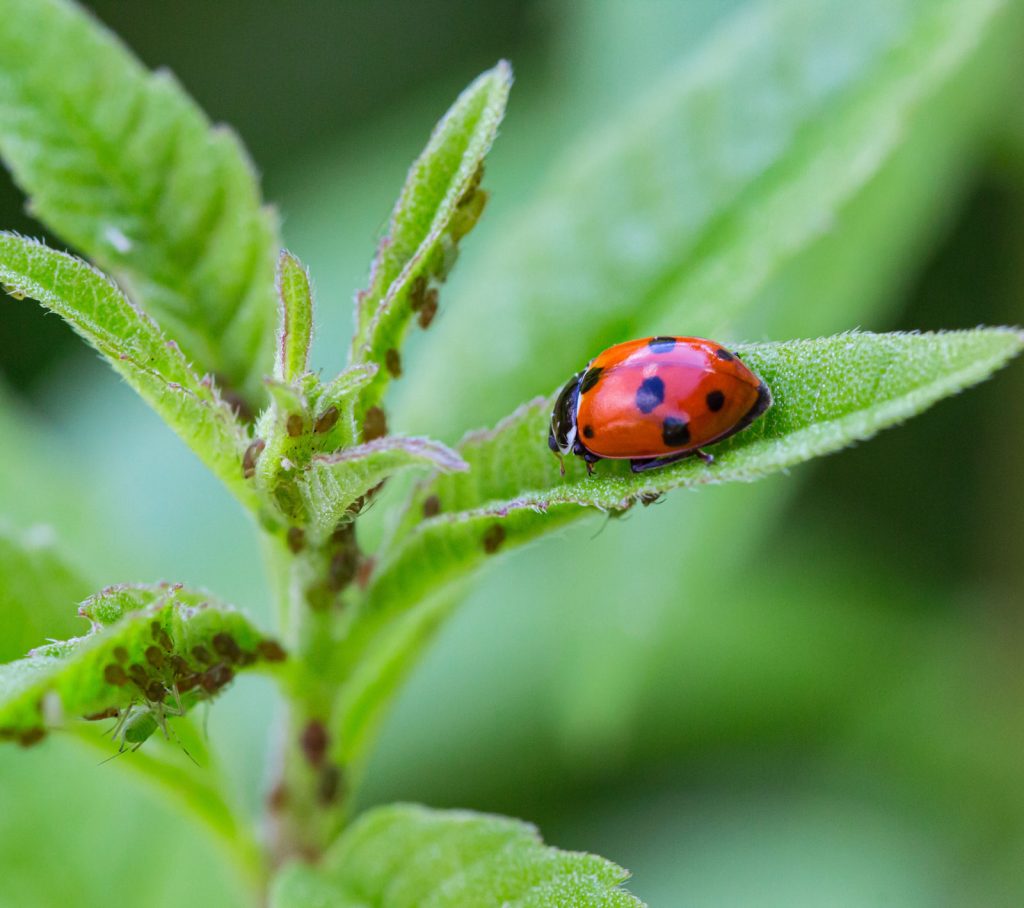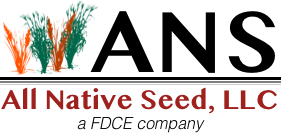
The role of native plants in attracting and sustaining insects like ladybugs, beetles, and predatory wasps that help control pests naturally.
When we think of beneficial insects in native plant ecosystems, our minds often go straight to pollinators, bees, butterflies, and hummingbirds. While these species are essential to the success of native plantings and agricultural systems, there’s a broader and often overlooked group of allies that also benefit from native habitats: natural pest controllers like ladybugs, ground beetles, and parasitic wasps.
For landowners enrolled in the Conservation Reserve Program (CRP) or anyone working toward sustainable land management, planting native species does more than promote pollination; it helps build a resilient ecosystem that reduces the need for chemical pesticides. Here’s how native plants support these lesser-known but incredibly valuable insects.
The Role of Beneficial Insects in Pest Management
Beneficial insects are natural enemies of many common agricultural pests, including aphids, caterpillars, mites, and leafhoppers. By supporting the habitat needs of these “good bugs,” landowners can foster natural pest control and reduce the impact of destructive insects on crops, grasses, and wildflowers.
Key players include:
- Lady beetles (ladybugs): Feed on aphids, scale insects, and mealybugs.
- Ground beetles: Hunt soft-bodied pests like slugs and cutworms in the soil.
- Green lacewings: Their larvae are voracious predators of aphids and small caterpillars.
- Parasitic wasps: Lay eggs inside pest larvae, controlling populations from within.
- Hoverflies: Adults pollinate while larvae consume aphids and thrips.
How Native Plants Provide for Beneficial Insects
Native plants create a diverse, stable environment that supports the life cycles of beneficial insects by offering:
Shelter & Overwintering Habitat
Unlike manicured lawns or non-native monocultures, native plants and grasses provide structural complexity, dense thatch, leaf litter, and hollow stems, for insects to nest, overwinter, and seek refuge from predators and weather.
Alternative Food Sources
Even predators need energy from pollen and nectar, especially when pest populations are low. Many beneficial insects, such as parasitic wasps and hoverflies, depend on nectar-rich forbs like:
- Yarrow (Achillea millefolium)
- Golden Alexanders (Zizia aurea)
- Mountain Mint (Pycnanthemum spp.)
These plants offer essential food during early and late parts of the season when other floral resources may be scarce.
Continuous Blooms Throughout the Season
To support beneficial insects from early spring to late fall, native plantings should include species that bloom at different times. A diversity of bloom periods ensures a steady supply of nectar and shelter for insects through every life stage.
Native Grasses: Ground-Level Protection
While native forbs provide nectar and pollen, native grasses are equally important for beneficial insects, particularly ground beetles and spiders. Grasses such as:
- Little Bluestem
- Sideoats Grama
- Switchgrass
…create open ground-level structure with thatch for soil-dwelling and crawling insects, as well as a humid microclimate that supports their survival.
The Ecosystem Benefits of Supporting Beneficial Insects
Encouraging natural pest control through native plantings can lead to:
- Reduced pesticide use and lower input costs.
- More balanced ecosystems, minimizing pest outbreaks.
- Increased biodiversity and ecosystem resilience.
- Better pollination and seed production due to overlap with pollinator populations.
Let All Native Seed, LLC Help You Build Balanced Habitat
Whether you’re designing a CP42 Pollinator Habitat, wildlife buffer, or simply aiming to support a healthy landscape, All Native Seed offers:
- High-quality native grass and forb seed mixes.
- Custom solutions tailored to CRP requirements and ecological goals.
- Access to experienced professionals who’ve helped plant over 400,000 acres across the U.S.
We understand how the right native plants can support a full spectrum of beneficial insects, not just pollinators, and we’re here to help you create those thriving, functional landscapes.
Contact All Native Seed today to learn how we can help you support a healthier, more self-sustaining ecosystem, starting from the soil up.
